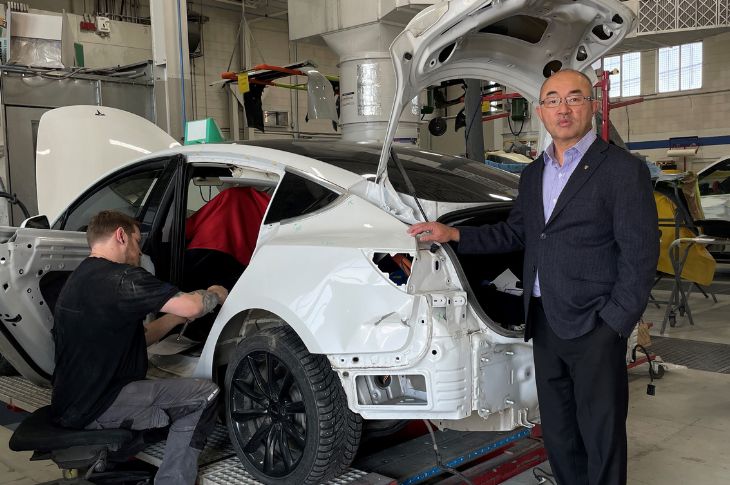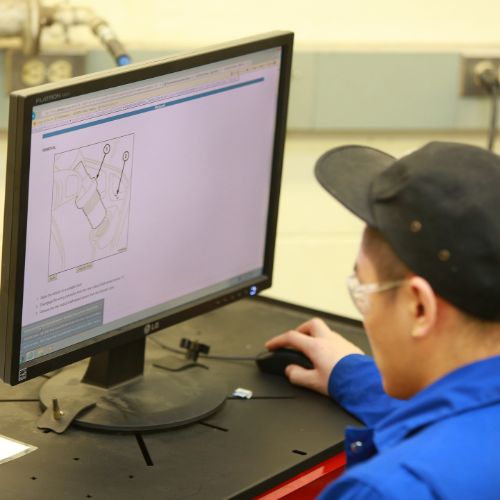Electric Vehicles spark transformation in collision repair

Loc Ngo (AABR ‘90), owner of Cosmos Collision, was an early adopter of working on Electric Vehicles (EVs). He describes the vehicles as being like humans, with all of the parts interconnected.
“With EV cars, if you have an accident, there will be electrical damage that will affect the whole vehicle,” Ngo says. “We have to spend more time on the repair plan and the repair itself because it’s more complex than a standard vehicle.”
Many shops are aiming to create more flexibility within both the shop environment and their processes. Electricity must be handled with care and expertise, so technician training, access to proper repair information, and the appropriate tools are vital.
A changing landscape for industry

The auto body trade has been stagnant for a long time,” says Ben Hart (AABR ’10), referring to the trade’s slow adoption of technology-centric repairs.
What was once heralded as industry standards in the collision trade are now outdated due to the many intricacies of today’s vehicles. Instead, mechanics often look to repair information that comes directly from vehicle manufacturers to complete their research.
Hart has experienced first-hand the development of EV technology and its impact on young tradespeople as an Auto Body Technician/Instructor at SAIT’s School of Transportation.
He says that until this last decade, updates to vehicle technology and architecture have had little influence on the auto body trade — but now, they’re greatly affecting the repair of EVs.
Hart says this education is important to both apprentices and the public — for example, while many vehicle owners shop around for estimates, hidden damage can make an estimate a guess at best.
Instead, Hart says to look for shops certified in repairing specific makes of vehicles. Ngo goes so far as to have an industrial electrician speak to his staff to prepare them for the high amounts of voltage they’ll be working with. Porsche batteries use 800-volt system voltage and weigh up to 2,000 pounds; some also have regenerative braking systems, which can be dangerous in a repair situation, so Ngo needs a Porsche electrical specialist to de-energize the system.
Growing pathways for learning
The rapidly evolving technology behind electric vehicles is also debunking the belief that careers in the field are focused exclusively on mechanical expertise. The dynamic and changing landscape for automotive technicians now combines theory and science, research and hands-on skills.
“When it comes to the electric future of vehicles, there’s a lot of unknowns — and that’s true for any technology,” Hart says. “One of the most important things for technicians right now is to have awareness.”
Industry Driven
We prepare students for successful careers and lives.
SAIT'S
2020-2025
Strategic plan

Oki, Âba wathtech, Danit'ada, Tawnshi, Hello.
SAIT is located on the traditional territories of the Niitsitapi (Blackfoot) and the people of Treaty 7 which includes the Siksika, the Piikani, the Kainai, the Tsuut’ina and the Îyârhe Nakoda of Bearspaw, Chiniki and Goodstoney.
We are situated in an area the Blackfoot tribes traditionally called Moh’kinsstis, where the Bow River meets the Elbow River. We now call it the city of Calgary, which is also home to the Métis Nation of Alberta.